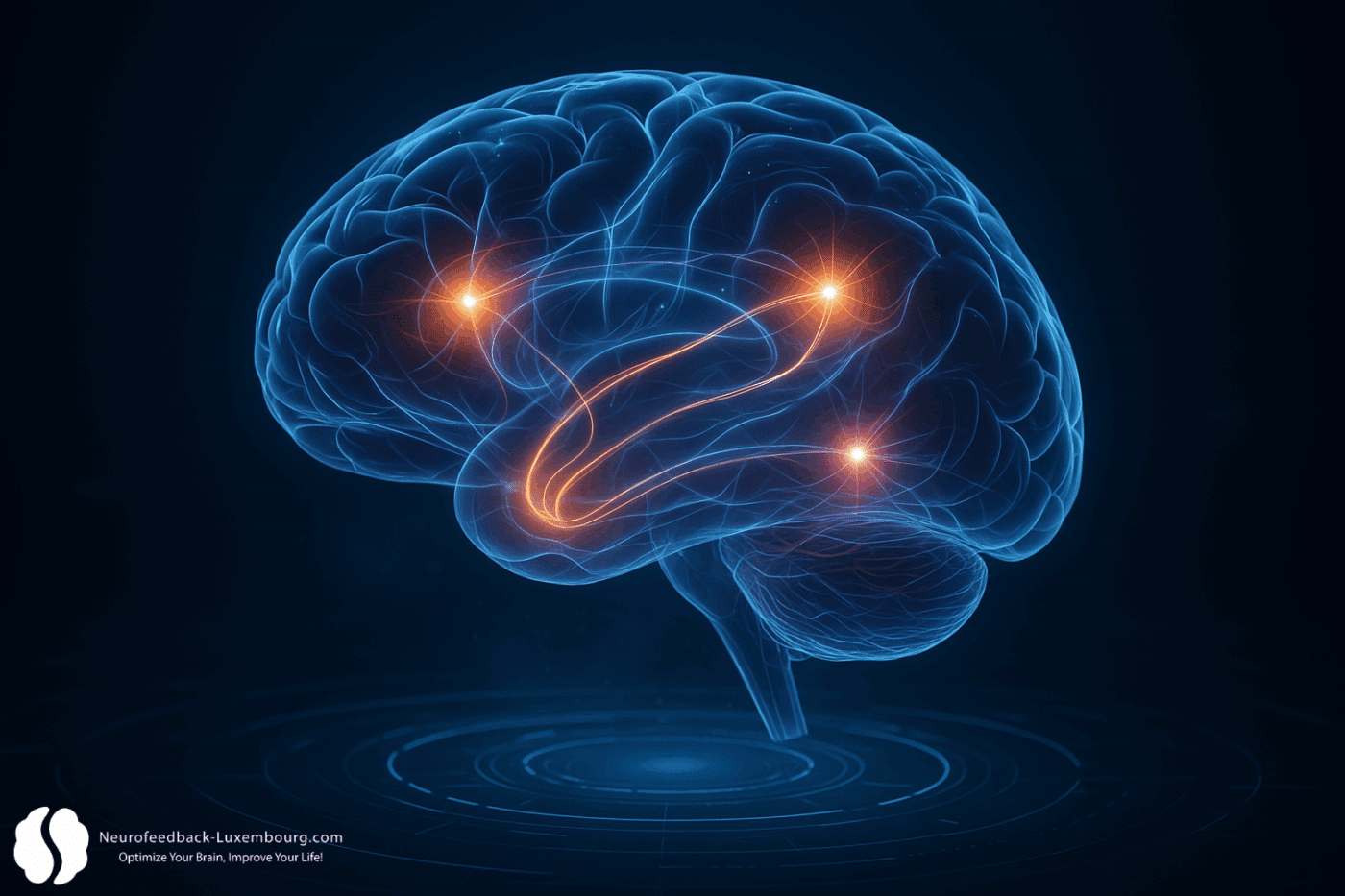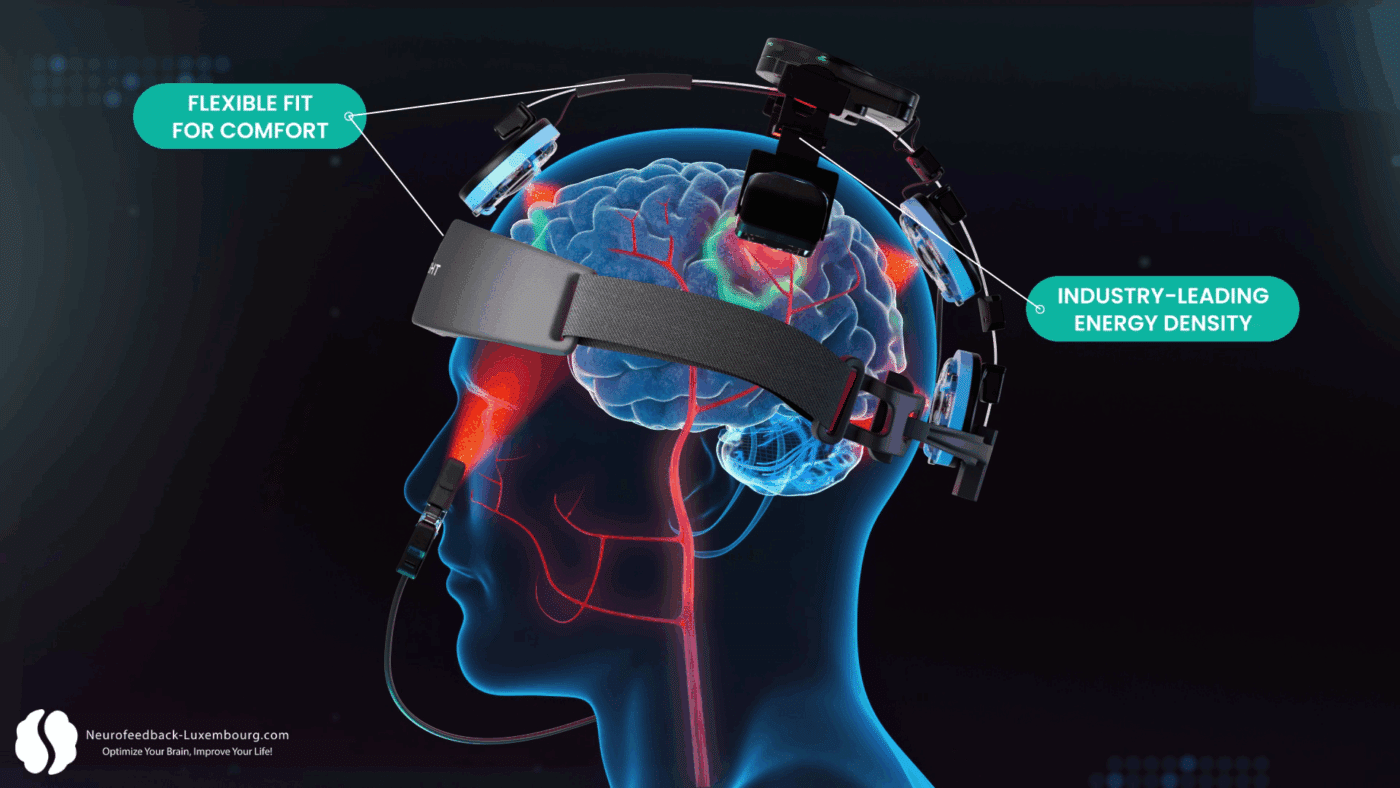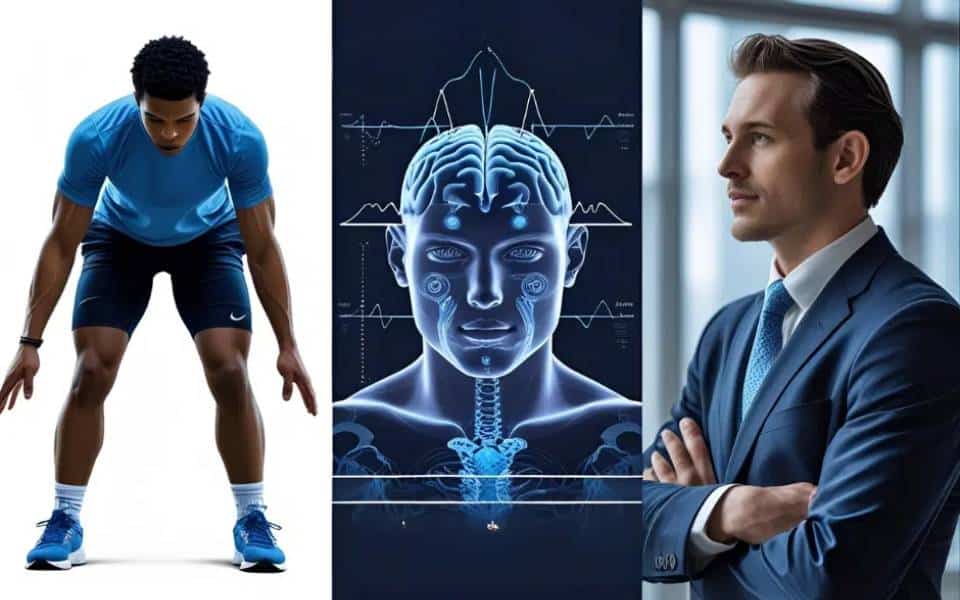Introduction to Photobiomodulation
Photobiomodulation (PBM) is an innovative, non-invasive therapeutic intervention that harnesses the power of red and near-infrared light to stimulate cellular activity and promote healing within the body. By delivering targeted wavelengths through low-level laser therapy or light emitting diodes (LEDs), PBM initiates a cascade of beneficial cellular processes, including enhanced energy production, reduced inflammation, and accelerated tissue repair. This approach has demonstrated promising results across a range of conditions, notably in neurodevelopmental disorders such as autism spectrum disorder (ASD), as well as in traumatic brain injury and major depressive disorder. PBM has also shown potential in the treatment of Alzheimer’s disease, with studies highlighting its possible benefits for cognitive decline and other neurodegenerative conditions.
The mechanism of PBM centers on the absorption of near infrared light by cellular components, particularly within the mitochondria, leading to increased adenosine triphosphate (ATP) production and improved cellular function. PBM can modulate mitochondrial activity, influencing the health of body cells and the production of reactive oxygen species, which play a role in neuroinflammation and cellular signaling. In the context of brain health, PBM has been shown to boost functional connectivity between brain regions, support neurogenesis, and modulate inflammatory responses—key factors implicated in the pathophysiology of spectrum disorders. As research advances, PBM is emerging as a safe and effective treatment option for individuals with autism spectrum disorder asd and other neurodevelopmental challenges, offering new hope for improved outcomes and quality of life. Previous studies have explored the efficacy of PBM in various neurological and neurodevelopmental disorders, supporting its potential therapeutic role. However, there is little or no evidence for some PBM applications, and further research is needed to establish its effectiveness in these areas.
Autism Spectrum Disorder Overview
Autism spectrum disorder (ASD) is a complex neurodevelopmental disorder that affects how individuals perceive and interact with the world around them. According to the developmental disabilities monitoring network, autism prevalence rates vary across different populations and locations. Characterized by a range of core symptoms, ASD primarily involves persistent difficulties in social interaction, challenges in both verbal and nonverbal communication, and the presence of restricted or repetitive behaviors. These repetitive behaviors can include routines, fixated interests, or unusual responses to sensory input. This section serves as an introduction autism spectrum disorder, providing a comprehensive overview of its features and clinical presentation.
ASD is described as a spectrum disorder because its symptoms and severity can vary widely from person to person, ranging from mild social awkwardness to significant impairments that require substantial support. Individuals with ASD may also present severe behavioral difficulties, including aggression, self-injurious behavior, and irritability. Severe behavioral difficulties are common and can interfere with development and the well-being of caregivers. Attention deficit hyperactivity disorder and autoimmune disease are common comorbidities or risk factors in ASD. According to the Diagnostic and Statistical Manual of Mental Disorders (DSM-5), a diagnosis of autism spectrum disorder is based on the presence of these autism spectrum disorder symptoms across multiple settings and over time. Understanding the diverse presentations of ASD is essential for developing effective early intervention strategies and individualized support plans, as each person with autism spectrum disorder asd has a unique profile of strengths and challenges.
Diagnosis and Assessment in Autism Spectrum Disorder: Childhood Autism Rating Scale
Diagnosing autism spectrum disorder (ASD) involves a thorough and multidisciplinary evaluation process designed to capture the full range of an individual’s behaviors, developmental history, and communication abilities. The assessment typically begins with a detailed review of medical and developmental milestones, followed by direct observation and interaction with the individual. Standardized tools, such as the Childhood Autism Rating Scale (CARS), play a crucial role in this process by systematically evaluating behaviors across key domains, including social interaction, communication, and repetitive behaviors.
The CARS score helps clinicians determine the presence and severity of spectrum disorder symptoms, guiding both diagnosis and treatment planning. Changes in CARS scores are often used as a primary outcome in clinical studies evaluating treatment efficacy, as they provide a key metric for clinical improvement and response to intervention. Certain CARS score ranges indicate severe autism, which is important for identifying clinical severity and guiding individualized treatment strategies. A team of professionals—often including psychologists, psychiatrists, speech and language therapists, and other specialists—collaborates to ensure a comprehensive understanding of the individual’s needs. Early and accurate diagnosis of autism spectrum disorder asd is vital, as it enables timely access to therapeutic interventions that can significantly improve developmental outcomes and quality of life for children with autism spectrum and their families.
What is Photobiomodulation Autism Spectrum Disorder Therapy?
Photobiomodulation (PBM) autism therapy represents a groundbreaking non-invasive approach that leverages specific wavelengths of near-infrared light to address the underlying neurobiological challenges in autism spectrum disorder (ASD). tPBM treatment is a form of non invasive brain stimulation, delivered using an investigational medical device designed for safety and efficacy in clinical settings. A pilot exploratory study has assessed the feasibility and initial outcomes of PBM in ASD, providing valuable insights for future research.
The core mechanism involves near-infrared light (typically 810nm) penetrating brain tissue and stimulating cytochrome c oxidase, the key enzyme in mitochondrial energy production. Low level light therapy is another term for this approach. This process enhances adenosine triphosphate (ATP) synthesis, improves cerebral blood flow, and promotes neuroplasticity—critical factors often compromised in individuals with autism. Studies have reported significant improvement in symptoms and functioning following PBM interventions. Clinical trial registration is essential for studies investigating PBM in autism to ensure transparency and credibility.
The Neurobiological Foundation of Autism and PBM
Photobiomodulation Mechanisms in Autism Research
The therapeutic application of photobiomodulation in autism spectrum disorders is an emerging field with limited but promising research. The primary mechanism of photobiomodulation involves the excitation of mitochondrial cytochrome c oxidase, which may enhance metabolic capacity and support anti-inflammatory and antioxidant responses in neurons. In addition, photobiomodulation may influence neural oscillations, which are associated with behavioral and cognitive outcomes in ASD.
Current evidence for photobiomodulation in autism comes primarily from a single proof-of-concept study by Ceranoglu et al. (2022) that examined transcranial photobiomodulation in adults with high-functioning autism spectrum disorder, reporting positive findings. Previous studies have also explored the effects of photobiomodulation on neural activity and ASD symptoms, supporting its potential as a therapeutic intervention.
Default Mode Network Connectivity Challenges in Autism
Autism spectrum disorders are increasingly understood as conditions of altered brain network connectivity. Neuroimaging studies consistently reveal:

Default Mode Network (DMN) Alterations:
- Reduced connectivity in regions responsible for self-referential thinking
- Impaired integration between posterior cingulate cortex and medial prefrontal areas
- Disrupted social cognition networks
Central Executive Network (CEN) Dysfunction:
- Compromised attention and working memory circuits
- Reduced frontal-parietal connectivity
- Executive function deficits
Salience Network (SN) Irregularities:
- Altered switching between internal and external attention
- Sensory processing challenges
- Social communication difficulties
Breakthrough Research: PBM in High-Functioning Autism
The Ceranoglu Study: Clinical Evidence
A landmark 2022 study by Ceranoglu et al. published in Photobiomodulation, Photomedicine, and Laser Surgery provided the first rigorous clinical evidence for photobiomodulation’s efficacy in autism spectrum disorder. This proof-of-concept study examined adults with high-functioning ASD using transcranial PBM protocols.
Key Findings:
- Significant improvements in executive function measures
- Enhanced social communication abilities
- Reduced repetitive behaviors and restricted interests
- Improved emotional regulation and stress management
- Notable gains in cognitive flexibility and attention
The study utilized 810nm near-infrared light delivered through specialized headsets, targeting specific brain regions associated with autism-related challenges. Treatment sessions lasted 20 minutes, administered twice a week over 8 weeks.
Mechanistic Insights from Research
The therapeutic effects observed in autism PBM research can be attributed to several converging mechanisms:
1. Cellular Energy Restoration Enhanced mitochondrial function provides the energy necessary for optimal neuronal communication, particularly crucial in regions governing social cognition and executive function.
2. Neuroplasticity Enhancement Increased ATP availability and improved cellular health create optimal conditions for synaptic remodeling and new neural pathway formation—essential for learning and behavioral adaptation.
3. Network Connectivity Optimization PBM appears to modulate brain oscillations at specific frequencies, potentially normalizing the altered network dynamics characteristic of autism spectrum disorders.
4. Inflammation Reduction The therapy’s anti-inflammatory effects may address the neuroinflammation often present in ASD, contributing to improved behavioral and cognitive outcomes.
Clinical studies have also reported improvements in behavioral symptoms, with changes in EEG patterns such as delta and theta waves being associated with positive shifts measured by standardized scales.
QEEG-Guided Photobiomodulation: A Personalized Approach
At Neurofeedback Luxembourg, our unique methodology combines quantitative electroencephalography (QEEG) analysis with targeted photobiomodulation protocols, creating personalized treatment strategies for individuals with autism spectrum disorders. QEEG analysis provides valuable insights into brain electrophysiology, including measures such as delta power, which help assess neural activity patterns and monitor treatment effects.
The Integration Advantage
Precision Targeting: Our comprehensive QEEG analysis, derived from over 2,000 brain assessments, identifies specific network dysfunction patterns in each individual. This data guides optimal PBM device placement and protocol selection.
Frequency-Specific Protocols: Based on QEEG findings, we utilize either:
- Alpha protocols (10Hz) for individuals showing excessive beta activity and anxiety
- Gamma protocols (40Hz) for those requiring enhanced cognitive processing and attention
Structured Treatment Program: Our autism-specific photobiomodulation protocols follow an intensive approach with a minimum duration of 6 weeks, administered at 4 sessions per week. This frequency ensures consistent neuroplastic stimulation while allowing for progressive QEEG monitoring to track changes in brain activity patterns throughout the treatment course.
Real-Time Monitoring: Continuous QEEG assessment during PBM sessions allows for protocol adjustments, ensuring optimal therapeutic outcomes based on individual response patterns.
Clinical Protocol Development
Our autism-specific PBM protocols incorporate:
Pre-Treatment Assessment:
- Comprehensive QEEG brain mapping
- Cognitive and behavioral evaluations
- Sensory processing assessments
- Family history and medical background review
Individualized Treatment Design:
- Target identification based on network analysis
- Frequency selection guided by brain oscillation patterns
- Session duration and intensity optimization
- Integration with existing therapeutic interventions
Outcome Measurement:
- Serial QEEG assessments tracking neural changes
- Standardized autism rating scales
- Cognitive function batteries
- Quality of life measures
Clinical Applications and Treatment Protocols

Primary Therapeutic Targets
Executive Function Enhancement: PBM targeting frontal-parietal networks can significantly improve planning, organization, and cognitive flexibility—core challenges in autism spectrum disorders.
Social Communication Improvement: Protocols focusing on temporal-parietal junction and medial prefrontal cortex may enhance theory of mind, emotional recognition, and social reciprocity.
Sensory Processing Optimization: Targeted stimulation of sensorimotor regions can help regulate sensory hypersensitivity and improve adaptive responses to environmental stimuli.
Anxiety and Stress Reduction: Alpha-frequency protocols targeting the default mode network often result in decreased anxiety and improved emotional regulation.
Treatment Implementation
Session Structure:
- Duration: 20 minutes per session
- Frequency: 4 sessions per week initially
- Protocol: Combination transcranial and intranasal delivery (also combined with Vagus stimulation)
- Monitoring: daily therapy log and questionnaire treatment
The Luxembourg Advantage: Pioneering Integrated Neurotherapy
As the first center in Luxembourg to combine photobiomodulation with advanced QEEG-guided neurofeedback, we offer unique advantages:
Comprehensive Assessment Capabilities
Our team’s expertise, built through 1,500+ clinical sessions and extensive training in neurophysiology, enables sophisticated treatment planning that considers:
- Individual neural network patterns
- Developmental history and current functioning
- Family dynamics and support systems
- Integration with educational and therapeutic services
Advanced Technology Integration
We utilize state-of-the-art Vielight systems, including:

- Neuro Duo 4: Dual-frequency capability for personalized protocols
- Neuro Gamma 4: High-frequency stimulation for cognitive enhancement
- Combined systems: Integrated brain and vagal nerve stimulation
Multilingual Clinical Support
Our trilingual team (French, English, German) ensures optimal communication and cultural sensitivity, crucial factors in autism spectrum disorder treatment where family involvement is essential.
Future Directions and Research Implications
Emerging Applications
Pediatric Protocols: At Neurofeedback Luxembourg, we are actively developing safe and effective PBM protocols specifically adapted for children and adolescents with autism, recognizing the importance of early intervention during critical developmental windows.
Combination Therapies: Future studies will likely explore PBM integration with:
- Applied Behavior Analysis (ABA)
- Speech and language therapy
- Occupational therapy interventions
- Pharmaceutical treatments
Biomarker Development: Advanced neuroimaging and electrophysiological measures may soon enable prediction of treatment response, allowing for even more personalized therapy selection.
Technological Advancement
AI-Guided Protocols: Artificial intelligence systems analyzing QEEG patterns and treatment responses will likely enable real-time protocol optimization, maximizing therapeutic efficiency.
Home-Based Systems: Development of simplified, family-friendly devices may extend treatment accessibility while maintaining clinical oversight through telemedicine platforms.
Clinical Considerations and Safety Profile
Safety and Tolerability
Photobiomodulation therapy demonstrates an excellent safety profile in autism applications:
- Non-invasive delivery with no systemic medication requirements
- Minimal side effects typically limited to mild, temporary fatigue
- No contraindications with most existing autism therapies
- Well-tolerated across age groups and functioning levels
Treatment Readiness Assessment
Optimal candidates for PBM autism therapy typically demonstrate:
- Ability to tolerate headset placement for treatment duration
- Sufficient cooperation for QEEG assessment procedures
- Family commitment to consistent treatment schedules
- Realistic expectations regarding treatment timeline and outcomes
References and Resources
Voici la section corrigée basée uniquement sur les sources documentées :
Further Reading and Research References
For those seeking additional information on photobiomodulation research, the following documented studies provide valuable insights:
Autism-Specific Research
- Ceranoglu, T. A. et al. (2022): “Transcranial photobiomodulation in adults with high-functioning autism spectrum disorder: Positive findings from a proof-of-concept study.” Photobiomodulation, Photomedicine, and Laser Surgery, 40(1), 4–12. This represents the primary published clinical evidence for PBM applications in autism spectrum disorders.
Related Neurological Conditions
- Saltmarche et al. (2017): “Significant improvement in cognition in mild to moderately severe dementia cases treated with transcranial plus intranasal photobiomodulation: Case series report.” This study demonstrates PBM’s potential in neurodegenerative conditions, providing insights into mechanisms that may be relevant for understanding cellular-level effects.
- Lim, L. (2024): “Modifying Alzheimer’s disease pathophysiology with photobiomodulation: model, evidence, and future with EEG-guided intervention.” Frontiers in Neurology. A comprehensive review examining PBM mechanisms in neurodegenerative disease, offering foundational understanding of cellular pathways.
Supporting Research
- González-Muñoz et al. (2023): “Efficacy of Photobiomodulation Therapy in the Treatment of Pain and Inflammation: A Literature Review.” Healthcare 11(7):938. This literature review examines PBM’s anti-inflammatory effects, which may have relevance for neuroinflammation aspects of various neurological conditions.
- Chao, L. L. (2019): “Effects of home photobiomodulation treatments on cognitive and behavioral function, cerebral perfusion, and resting-state functional connectivity in patients with dementia: A pilot trial.” Photobiomodulation, Photomedicine, and Laser Surgery. Provides evidence for PBM effects on brain connectivity networks.
Current Research Limitations
It is important to note that research specifically investigating photobiomodulation in autism spectrum disorders remains extremely limited. The Ceranoglu study represents the only published clinical investigation to date. Most current understanding of PBM mechanisms comes from research in other neurological conditions, and direct extrapolation to autism should be approached cautiously.
Future research priorities should include larger, controlled clinical trials specifically designed for autism populations, investigation of optimal treatment parameters, and development of standardized outcome measures for this population.
Conclusion: A New Paradigm in Autism Intervention
Photobiomodulation represents a paradigm shift in autism spectrum disorder treatment, addressing underlying neurobiological dysfunction rather than merely managing symptoms. The convergence of cellular energy enhancement, network connectivity optimization, and personalized QEEG guidance creates unprecedented opportunities for meaningful intervention.
At Neurofeedback Luxembourg, our integration of this cutting-edge technology with comprehensive neurotherapeutic expertise positions us at the forefront of autism treatment innovation. As research continues to validate and refine PBM protocols, we remain committed to translating scientific advances into tangible improvements in the lives of individuals with autism spectrum disorders and their families.
The future of autism intervention lies not in single-modality approaches, but in sophisticated integration of complementary technologies. Photobiomodulation, guided by precise neurophysiological assessment and combined with established therapeutic frameworks, offers genuine hope for enhanced quality of life and functional independence for those affected by autism spectrum disorders.
Discover your brain optimization potential today. Visit our website to learn more about photobiomodulation and our integrated approach, and schedule your preliminary teleconsultation. Together, let’s explore how transcranial photobiomodulation can transform your brain health.
About Neurofeedback Luxembourg
As Luxembourg’s premier neurotherapy center, we specialize in QEEG-guided neurofeedback and advanced photobiomodulation therapies. Our evidence-based approach, multilingual clinical team, and commitment to technological innovation ensure optimal outcomes for individuals with neurological and developmental challenges.
Contact us to learn more about our comprehensive autism spectrum disorder treatment programs and schedule your initial assessment.

